The Bremen Collection is a portrait of a city, reflecting key historical, contemporary and future aspects of its existence.
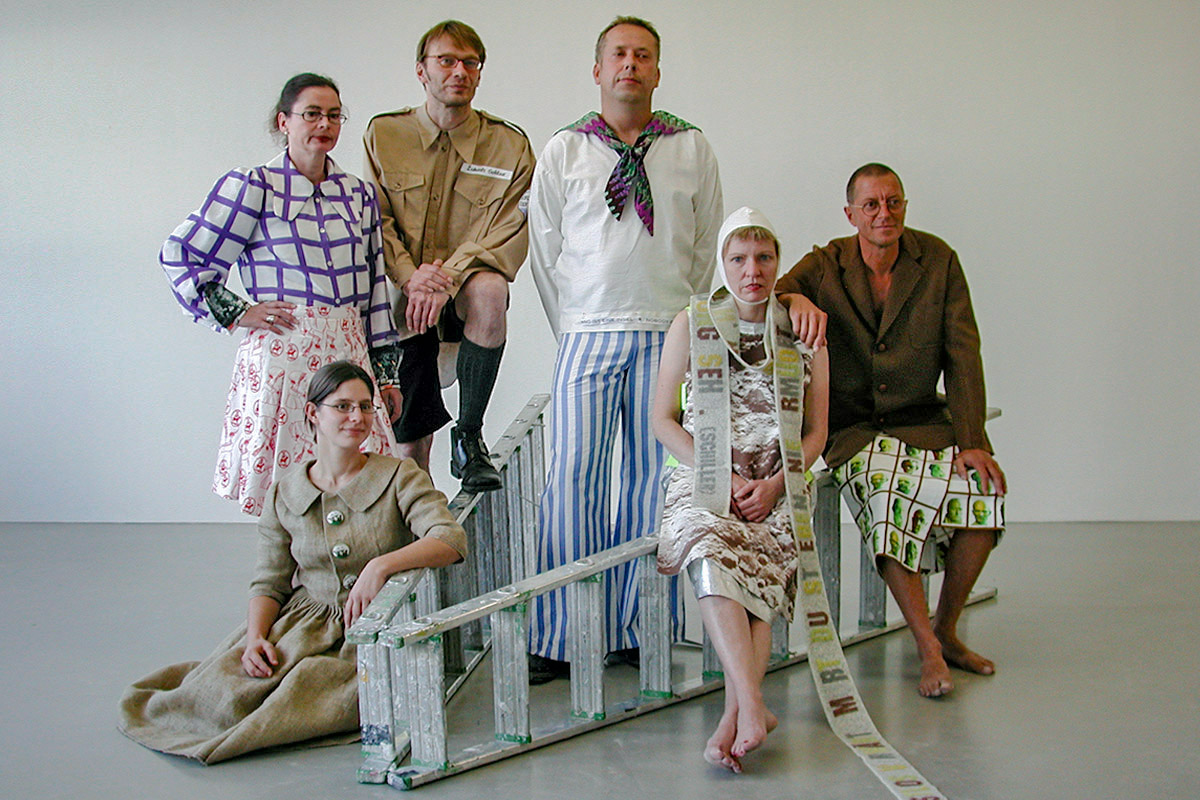
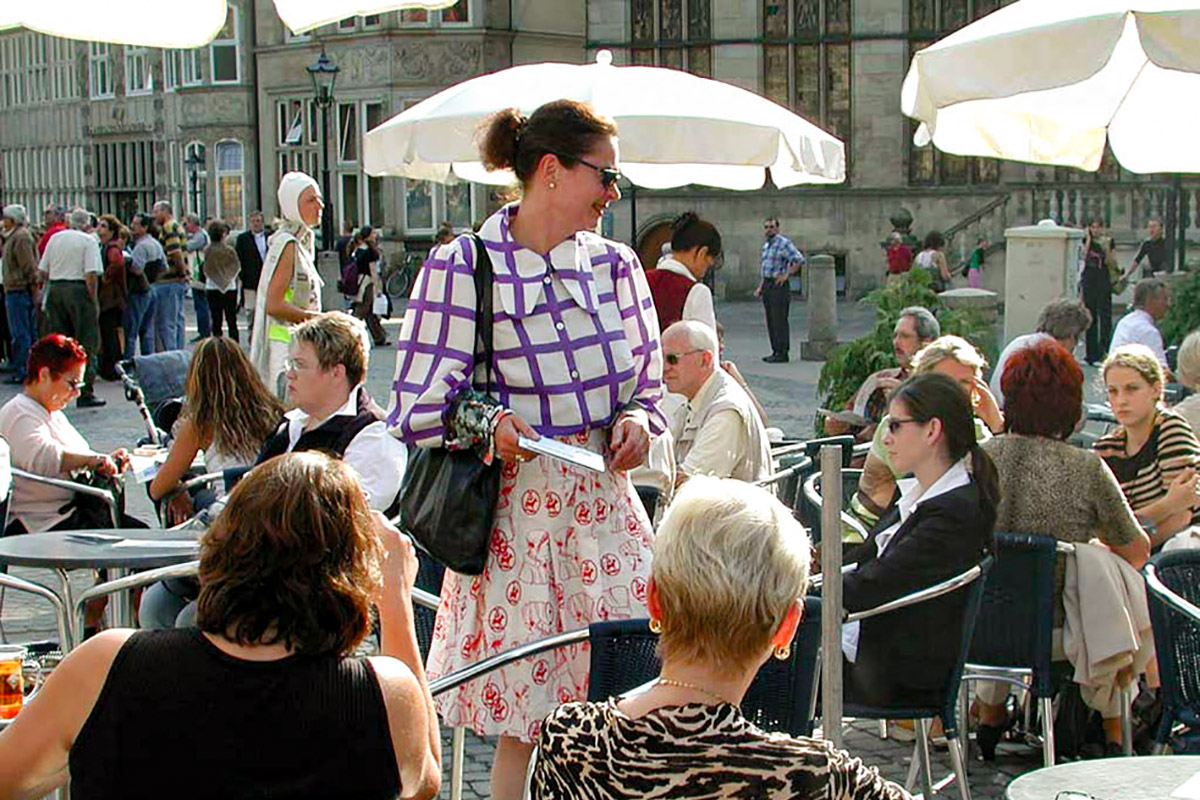
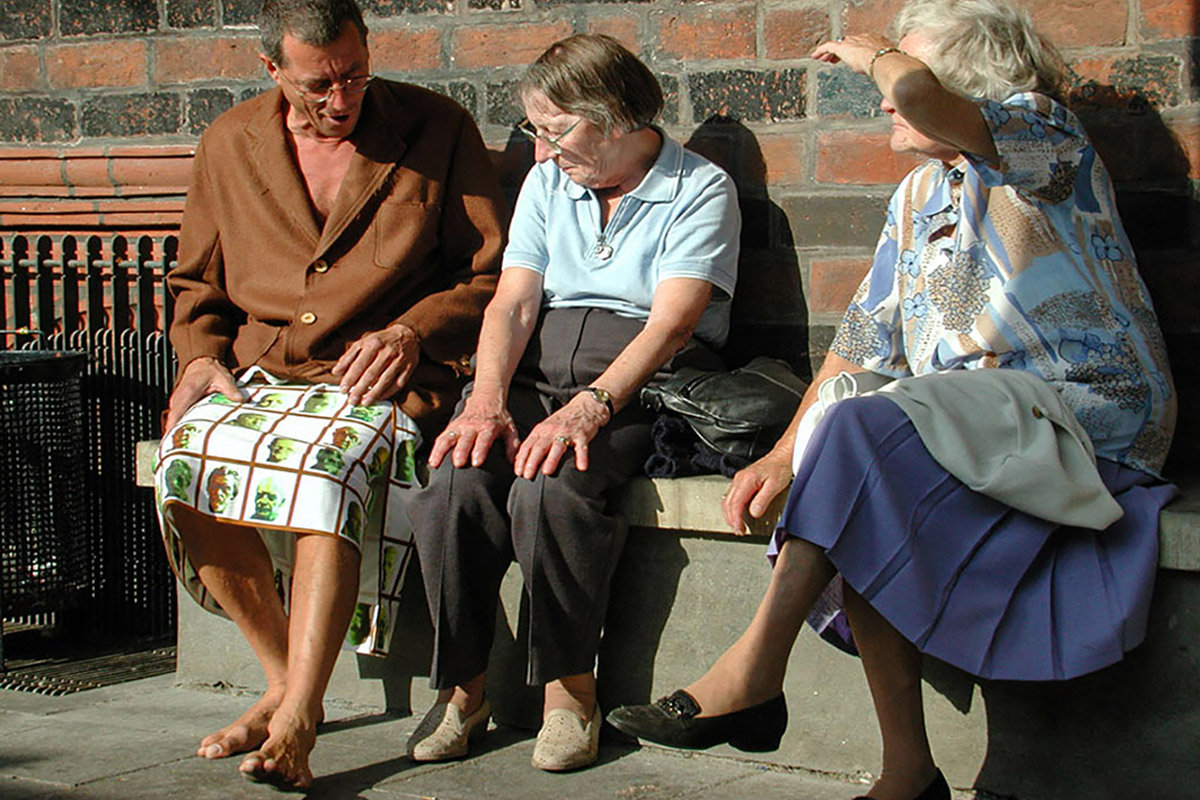
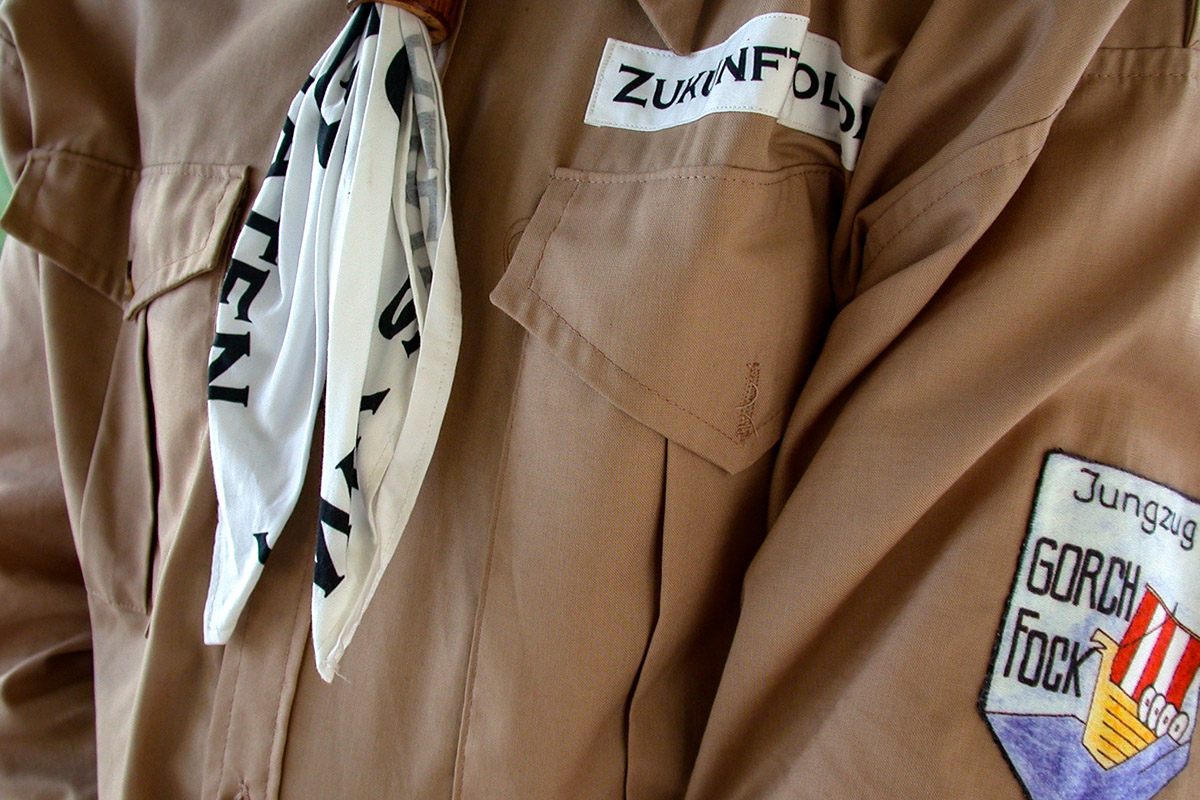
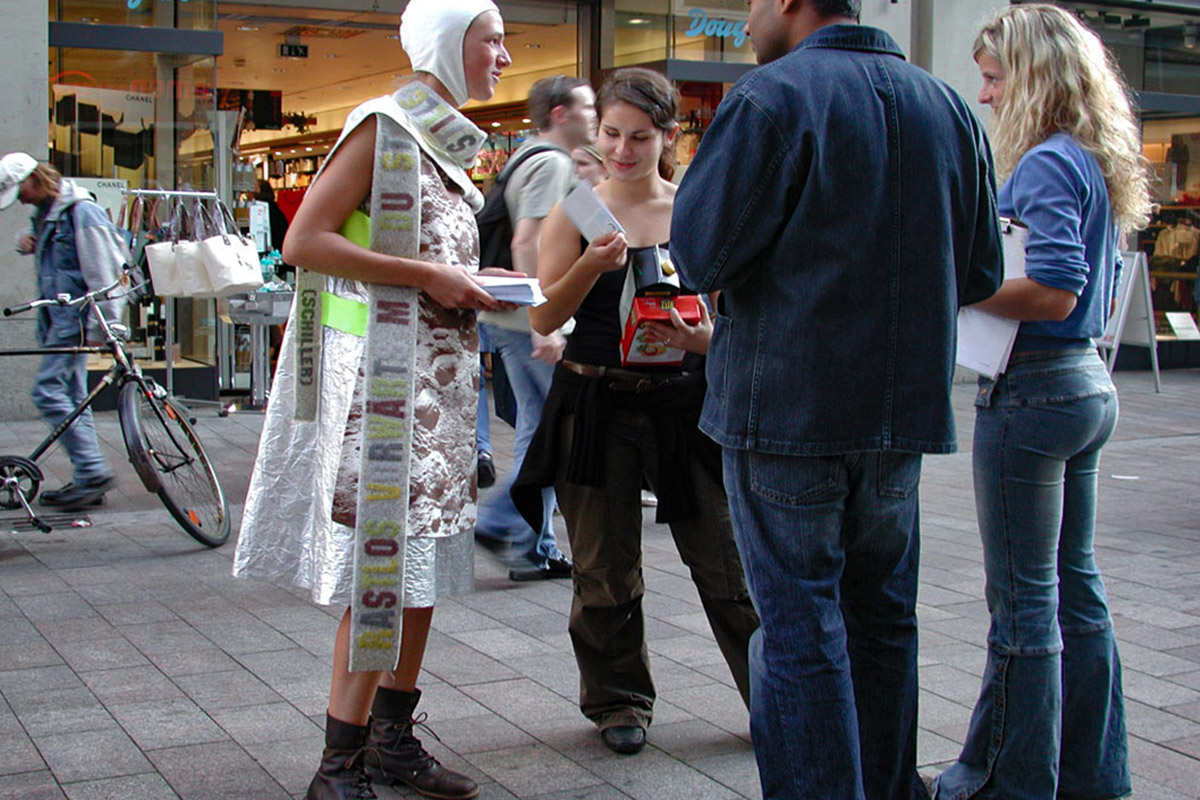
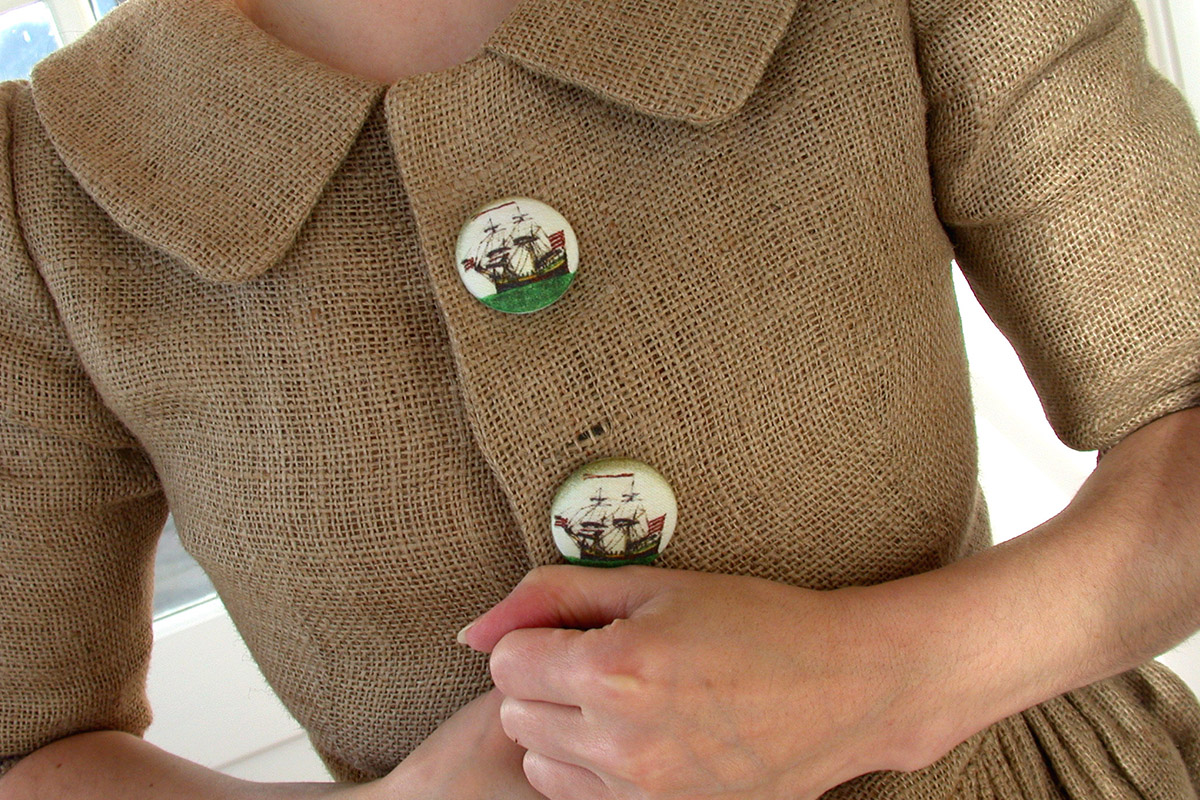
Adopting the role of ‘tourist’ is often the way Tracy & Edwin start to investigate and understand a new place. Information around a specific area of interest is gathered as they access and contribute to particular kinds of knowledge through research trips that involve meetings, and mapping the area by walking, talking, filming, writing and drawing. What remains constant across all projects is their recognition of their status as visitors, with no pretentions otherwise. This position has a positive effect, allowing people to open-up in the knowledge that the artists will eventually leave.
The group exhibition No Man is an Island, 2003, gave Tracy & Edwin the opportunity to design and print fabrics for a series of outfits that commented on Bremen. Research focused on the history of fashion and an exploration of Bremen’s past as a Hanseatic trading city and its multiethnic present and contemporary activity as a centre for aeronautics and space travel industry. The problem faced was in how to bring together the past, something defined and definable, and the future, something that the city was attempting to shape. The city’s history was visible, documented in image and text and as anecdote and story. As is the case in many cities with an influential history, in direct contrast to the secured image of the past, the city’s future is often a fluid entity, a series of projected ideas that do not grow organically but are the result of a political and economic need to define a new image. The aim was to make a work that brought past, present and future together.
The audience for the work was to be Bremen’s citizens, and so the outfits were activated in the city as a catalyst for conversation, comment and discussion.
The wearers of the six outfits became the vehicles that enabled dissemination, the clothes moving across the city during a series of unscheduled appearances. The lack of announcements and the casual air that the wearers adopted allowed them to mingle with the public, the absence of an advertising or marketing strategy making them non-confrontational.
During the research phase for the clothes’ designs Tracy & Edwin looked at how the city markets itself. The sometimes uneasy juxtaposition of garments in some of the outfits created an immediate feeling of the clothes not belonging to a label or brand, thereby not having a single ‘message’ to impart. The Zükunft Soldat as an example, was confrontational in its direct reference to the city’s political past, reinforced by the oddity of the half-man, half-boy sizing.
Portraiture is a recurring component of Tracy & Edwin’s work, and with these clothes they consciously set out to make a contemporary portrait of the city. It was activated when all the outfits were worn together and affected by the influence of the individual wearers.
Supported by The British Council, Mondriaan Foundation, Hope Scott Trust, Fine Art Research Duncan of Jordanstone College of Art & Design, University of Dundee.